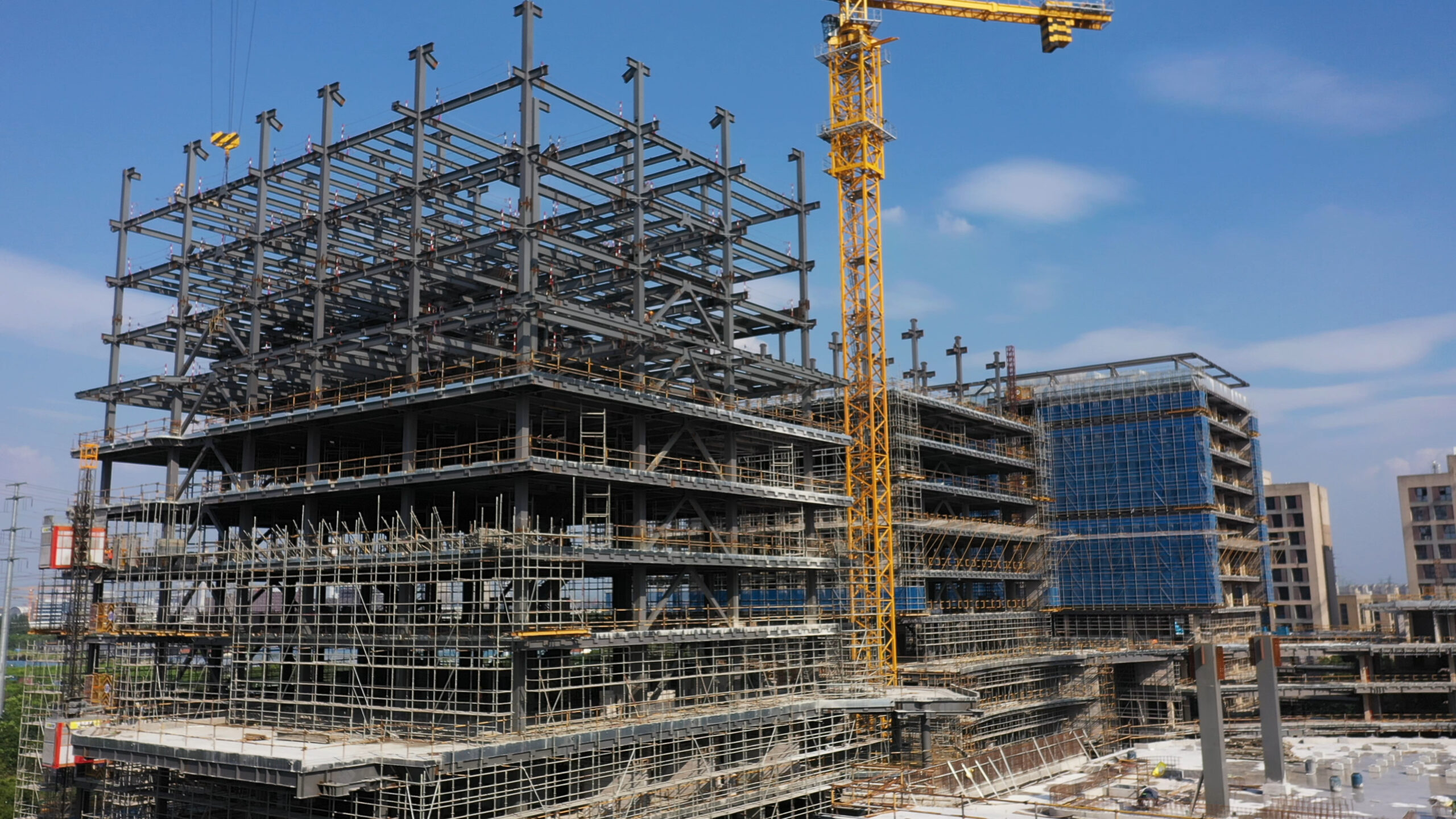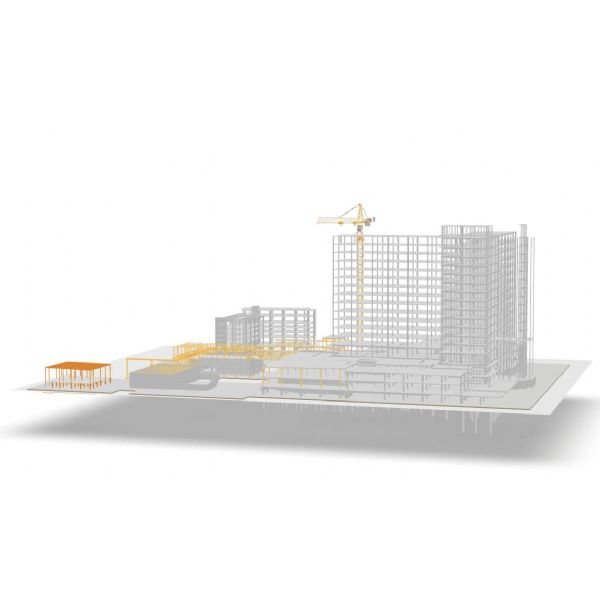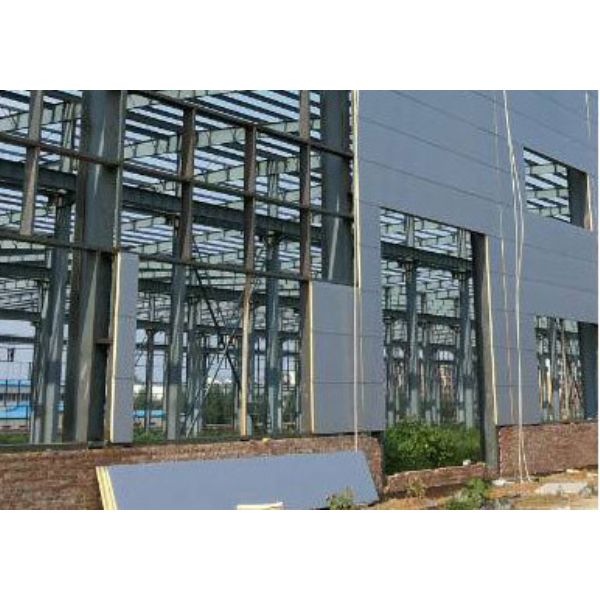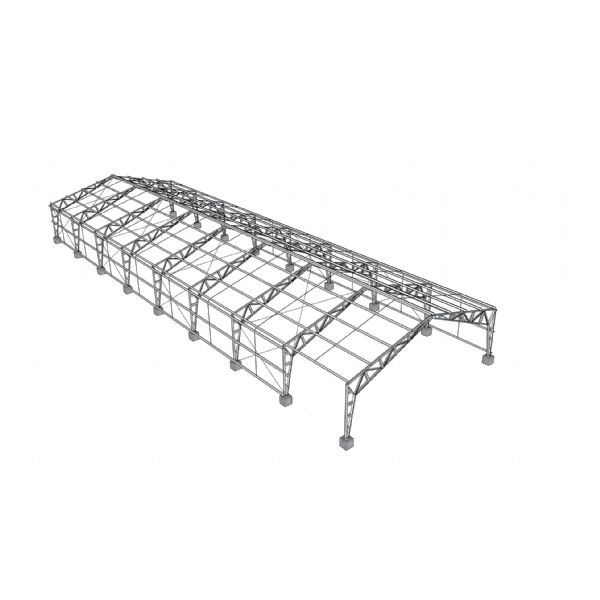Top 10 Advantages of Choosing a Steel Building for Your Next Project
Steel buildings are modern construction systems that utilize prefabricated steel frames, columns, and panels to create durable, high-performance structures. These buildings are commonly used in factories, warehouses, office complexes, and modular residential designs. Their engineered framework allows for precise fabrication, quick installation, and superior strength — all key steel building construction advantages that make them stand out in the global construction industry.
In recent years, the demand for sustainable, fast, and cost-effective construction has made steel structures a preferred solution. Developers and investors value their flexibility, recyclability, and efficiency. Whether for industrial zones, logistics parks, or commercial complexes, steel buildings offer unmatched design freedom and long-term economic performance — one of the most compelling steel building construction advantages in today’s market.
This article explores the top 10 steel building construction advantages that make them ideal for modern construction projects. From strength and cost efficiency to environmental sustainability, each benefit demonstrates why steel has become the foundation of future-ready infrastructure.
1# Durability and Strength
Withstand Harsh Weather and Natural Disasters
One of the most significant steel building construction advantages lies in its exceptional durability and ability to withstand nature’s toughest challenges. Steel structures are engineered with high tensile and yield strength, enabling them to endure harsh weather such as typhoons, heavy snow loads, high-velocity winds, or even earthquakes. Unlike timber or concrete that can crack, rot, or splinter, steel maintains structural stability under pressure. Its uniformity of material properties provides predictable performance, ensuring long-term safety in regions prone to extreme climatic conditions.
Engineers often design steel buildings according to international standards such as EN, AISC, or GB codes. These design frameworks ensure that each structural component — from portal frames to trusses — meets load-bearing criteria under severe external forces. As climate patterns become more unpredictable worldwide, businesses and developers appreciate how steel’s resilience minimizes downtime and repair costs, highlighting a major competitive edge among steel building construction advantages.
Long Lifespan of Steel Structures
Durability is directly linked to lifespan. Properly maintained steel buildings can remain operational for more than half a century without significant structural degradation. The galvanization and anti-corrosive coatings applied to steel surfaces protect against oxidation, moisture, and chemical exposure. In coastal or industrial environments, this resilience translates to long-term reliability and reduced lifecycle costs. When compared to traditional construction materials that deteriorate due to humidity or pests, steel structures retain their performance metrics over decades, providing superior return on investment.
The long lifespan also supports sustainable development goals. Since the building does not require frequent reconstruction or material replacement, it reduces waste generation and conserves resources. This extended service life ranks at the top among steel building construction advantages for investors who seek enduring value and structural confidence.
2# Cost Efficiency
Lower Construction Costs
Another key factor driving the popularity of steel construction is cost efficiency. Prefabricated steel components are manufactured in controlled factory environments using automated processes such as CNC cutting, drilling, and welding. This precision reduces onsite errors, shortens project schedules, and minimizes waste. The result is a substantial reduction in total project expenditure. Developers can predict costs more accurately because steel quantity take-offs and fabrication schedules are standardized and transparent.
When considering large-scale industrial or commercial projects, labor and material costs account for the majority of the budget. Steel buildings minimize both. The combination of prefabrication, modular assembly, and transport-ready frames ensures rapid deployment. This makes steel an economical solution for companies seeking both quality and financial efficiency — a fundamental point within the spectrum of steel building construction advantages.
Reduced Maintenance Over Time
Maintenance expenses are often underestimated during the planning stage of a building. Over the lifespan of a structure, steel’s minimal maintenance requirements translate into considerable savings. The material does not require re-treatment against pests, structural reinforcement, or periodic replacement of damaged components. Protective coatings such as epoxy or powder finish shield the surface from corrosion and UV degradation, keeping the appearance fresh and professional.
Unlike concrete that may develop cracks or spalling, steel’s stable composition ensures that periodic inspections and cleaning are sufficient to maintain performance. For property owners, this reduced maintenance represents one of the most practical steel building construction advantages, ensuring predictable operational costs and minimal disruptions.
3# Faster Construction Time
Prefabrication and Easy Assembly
Speed is a critical factor in modern construction. Steel buildings deliver remarkable advantages through prefabrication and simplified assembly processes. Every column, beam, and purlin is fabricated to precise specifications before shipment to the site. Once delivered, these components fit together seamlessly using bolts, welds, or mechanical connectors, allowing for efficient and safe erection. This controlled process can cut construction timelines by 30–50% compared to concrete or masonry structures.
For developers facing tight schedules, faster completion means earlier occupancy, quicker ROI, and reduced financing costs. Whether constructing warehouses, logistics centers, or factories, this time advantage is among the most tangible steel building construction advantages that directly impacts profitability.
Reduced Labor Requirements
Because much of the fabrication occurs offsite, fewer skilled workers are needed during erection. The modular nature of steel building systems simplifies installation, requiring smaller crews and shorter working hours. This not only lowers labor costs but also enhances safety because tasks are standardized and predictable. Reduced human error further contributes to consistent quality. For large projects spanning thousands of square meters, this reduction in manpower requirement significantly improves productivity.
4# Design Flexibility
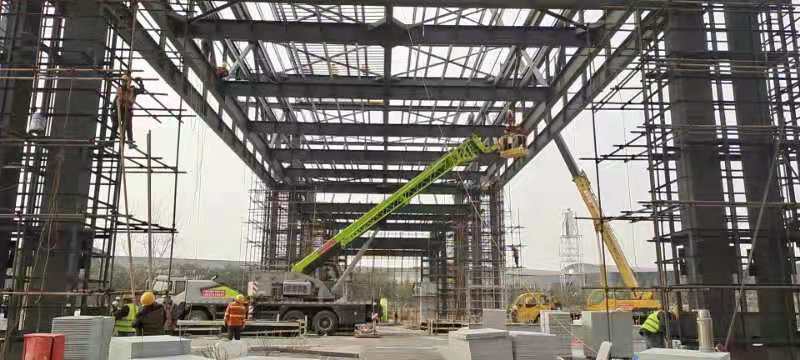
Customizable Layouts
Design flexibility is another hallmark of steel building construction advantages. Steel’s high strength-to-weight ratio allows architects to create vast open spaces without internal columns. These clear-span areas are ideal for factories, aircraft hangars, sports arenas, and retail complexes. The modular system permits future expansion — walls or bays can be extended without dismantling the main frame. Such adaptability supports business growth and evolving operational needs.
Compatible with Modern Architectural Styles
Beyond functionality, steel’s versatility supports aesthetic creativity. Architects can integrate glass façades, aluminum panels, or composite claddings to achieve sleek modern looks. Curved roofs, high atriums, or complex geometries become structurally feasible because steel components can be fabricated in diverse shapes and dimensions. This compatibility with modern design principles elevates the visual identity of corporate and industrial buildings, making architectural expression another layer of steel building construction advantages.
5# Energy Efficiency
Insulation Options for Temperature Control
Energy performance is a key concern for developers worldwide. Steel structures, when combined with advanced insulation systems, can maintain optimal indoor temperatures throughout the year. Common insulation materials include fiberglass batts, rigid foam panels, spray polyurethane foam, and reflective aluminum barriers. These systems prevent thermal bridging and reduce heating or cooling demands. Effective insulation improves energy efficiency by up to 40%, leading to lower operational costs.
Proper thermal design also minimizes condensation, which protects both structural integrity and occupant comfort. When combined with energy-efficient windows and ventilated façades, steel buildings can meet or exceed global green-building standards. Such thermal performance reinforces the environmental and economic dimensions of steel building construction advantages.
Compatibility with Solar Panels and Green Technology
Steel roofs are ideal platforms for photovoltaic panels due to their high load-bearing capacity and precise alignment surfaces. The structural frame easily supports renewable systems such as solar energy, rainwater harvesting, or even green roofs. Integration of these technologies reduces dependency on fossil fuels and enhances a company’s sustainability profile. In addition, reflective roof coatings help reduce the urban heat-island effect and maintain cooler indoor temperatures. These innovations show how steel building construction advantages extend beyond construction to long-term environmental performance.
6# Eco-Friendly and Sustainable
Recyclable Materials
Steel is one of the few construction materials that can be recycled repeatedly without losing its properties. Approximately 90% of structural steel worldwide is made from recycled scrap, demonstrating its crucial role in circular economy practices. At the end of a building’s life, steel components can be dismantled, reused, or melted down for new projects. This infinite recyclability dramatically reduces the demand for virgin materials and minimizes landfill waste.
Lower Environmental Impact
During production, modern steel mills have implemented energy-efficient technologies and emission control systems to lower carbon output. When compared to concrete production — which releases significant CO₂ during cement manufacturing — steel’s overall environmental footprint is smaller and continues to decline each year. Moreover, prefabrication reduces onsite pollution, dust, and noise, contributing to cleaner construction zones. These sustainable qualities make environmental stewardship an integral part of steel building construction advantages.
7# Low Maintenance Requirements
No Rot, Termite, or Mold Issues
Traditional wooden or composite structures often suffer from biological degradation such as termite infestation, mold growth, or wood rot. Steel eliminates these issues completely. Its inorganic nature does not provide nutrients for fungi or insects, ensuring hygienic and long-lasting facilities. In humid climates, this resistance is particularly valuable for agricultural buildings, cold-storage facilities, and coastal warehouses.
Minimal Painting and Repairs
High-quality finishes like hot-dip galvanization or epoxy coatings protect steel from rust and corrosion. Consequently, repainting is rarely necessary within decades of use. Even when required, maintenance is straightforward — surface cleaning and touch-ups are sufficient. This translates to reduced downtime and operational efficiency. The cumulative savings from minimized upkeep firmly place low maintenance among the top steel building construction advantages recognized by facility managers.
8# Fire and Pest Resistance
Fireproof Qualities of Steel
Steel’s non-combustible nature significantly enhances safety. Unlike wood, it does not ignite or contribute to fire spread. Structural steel maintains strength at high temperatures, especially when coated with fire-resistant materials such as intumescent paint or gypsum board. In industrial settings where flammable materials are handled, this inherent fire resistance ensures occupant protection and reduces insurance premiums. Fire safety compliance is therefore one of the critical steel building advantages appreciated by regulatory authorities and investors alike.
Inhospitable to Insects and Rodents
Beyond fire, steel buildings offer a pest-free environment. Rodents cannot gnaw through metal, and insects find no organic substrate for nesting. This cleanliness benefits food processing plants, storage facilities, and healthcare institutions that demand strict hygiene standards. Reduced pest control costs and improved sanitation reinforce the long-term operational benefits within the ecosystem of steel building construction advantages.
9# Versatility in Applications
Suitable for Residential, Commercial, and Industrial Use
The adaptability of steel structures is nearly limitless. They serve a wide range of functions — from residential villas and office towers to workshops and logistics warehouses. Because the system is modular, it can be designed for both small-scale buildings and large industrial complexes. Residential developers value the flexibility to create modern, energy-efficient homes, while industrial users benefit from large unobstructed floor areas for machinery and storage.
In the commercial realm, steel frames enable open-concept offices and retail spaces that can easily be reconfigured as businesses grow. This adaptability is a crucial differentiator within the suite of steel building construction advantages.
Adaptable for Warehouses, Garages, Offices, and More
Steel buildings’ modularity allows them to be tailored for diverse industries. Warehouses demand long spans and high ceilings; car garages require durable floors and ventilation; offices prioritize aesthetics and comfort — all these needs can be met by adjusting the same steel framework. Furthermore, steel’s compatibility with mezzanine floors and crane systems expands its functional range. The ability to meet such varied requirements with one core material system defines the structural and commercial value of steel building construction advantages.
10# High Resale and Investment Value
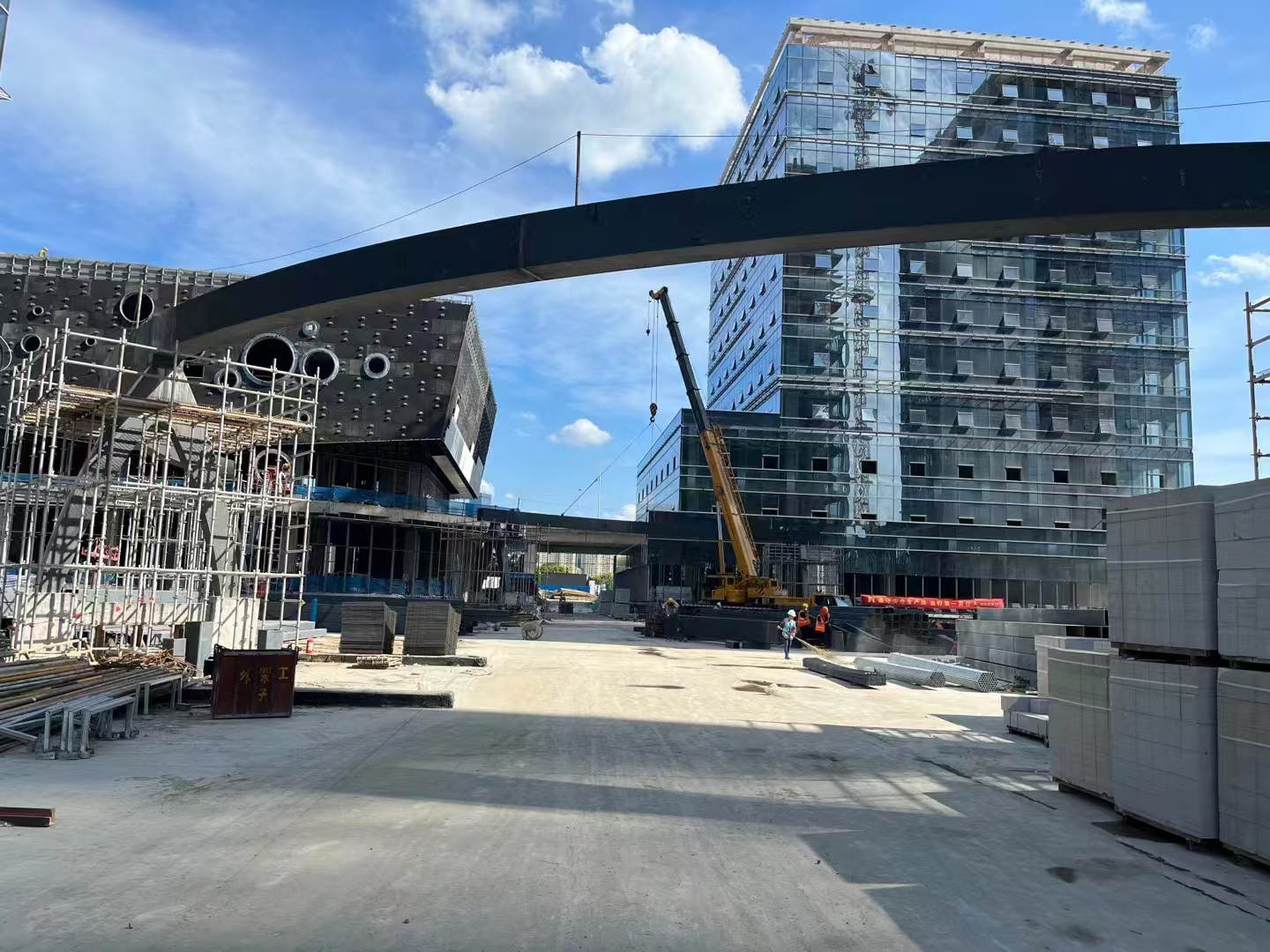
Strong ROI and Property Value
When assessing lifecycle economics, steel buildings consistently deliver higher returns than traditional structures. Their long service life, low maintenance, and energy efficiency translate into lower operating costs and sustained property value. Investors recognize that these quantifiable steel building construction advantages make assets more resilient to depreciation. Additionally, steel buildings are easier to modify or relocate, extending their usability and further improving ROI.
Appealing to Buyers and Investors
In global real-estate markets focused on sustainability, buyers are increasingly drawn to properties that meet green standards and durability benchmarks. Steel structures satisfy these expectations while offering architectural flexibility and safety. For developers, this appeal expands the potential buyer base and accelerates sales or leasing cycles. Institutional investors, in particular, appreciate the predictable performance and long-term value retention that rank high among steel building construction advantages.
Conclusion
Summary of Key Metal Building Advantages
From durability and cost efficiency to sustainability and design freedom, steel buildings represent a fusion of innovation and practicality. Each feature discussed reinforces why steel building construction advantages dominate modern engineering conversations. They perform exceptionally across structural, economic, and environmental dimensions, ensuring that every investment translates into lasting value.
Why Metal Buildings Are the Future of Construction
As the world moves toward low-carbon construction and digital fabrication, steel buildings embody the principles of smart, sustainable architecture. Their compatibility with renewable energy systems, modular prefabrication, and recyclable materials align perfectly with the global transition toward green infrastructure. For governments and corporations alike, adopting steel structures means aligning with ESG goals while reducing costs and emissions — hallmarks of steel building construction advantages that define future skylines.
Final Thoughts for Builders and Developers
In today’s competitive market, the choice of material defines the success of every project. Steel offers unmatched performance, speed, and longevity — the ultimate combination of strength and sustainability. Whether you’re building a warehouse, factory, or corporate headquarters, leveraging steel building construction advantages ensures that your structure stands as a lasting symbol of quality, innovation, and environmental responsibility.

